Increases in Englands recycling rate will be insufficient to meet the 50% by 2020 EU recycling target according to Defra, in the wake of the news that Englands recycling rate has climbed just 0.2 percentage points in 2012/13.
As revealed by the annual local authority recycling statistics published by the Department today (November 7), Englands recycling rate increased to 43.2% in 2012/13 from 43% in 2011/12.
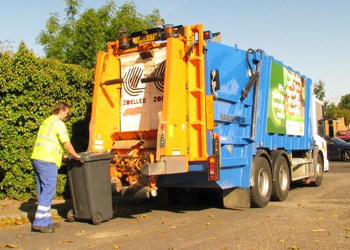
And, Defra notes in its statistical release that the rate at which recycling is currently increasing will not enable the UK to meet its target to recycle 50% of waste by 2020 as set out under the European Union’s revised Waste Framework Directive. This target may be subject to change as a review of waste targets is currently being undertaken at EU level.
Defra noted much variation across English councils performance with 73 out of 352 authorities achieving over a 50% recycling rate. As exclusively predicted by letsrecycle.com (see letsrecycle.com story) Rochford district council in Essex claimed top position with a recycling rate of 66.75%. See table below for top 10 recyclers.
Looking at the collective performance of English councils, the amount of local authority managed waste (LAMW) sent to incineration with energy recovery rose 13% over the last year with 5.5 million tonnes disposed of in this way in 2012/13.
Meanwhile, the amount of green waste sent for composting between January and March 2013 was over 27% lower than the previous year largely attributed to adverse weather conditions.
A 7% increase in commingled collections was seen in 2012/13 while the separate collection of glass and cans from the kerbside dropped by 10%. Additionally, the separate collection of paper and card dropped by 6%. Defra said this may be due to a number of factors including a change in consumer behaviour as they seek to minimise waste. Household waste arisings have fallen over the last five years down to 22.6 million tonnes in 2012/13.
Article continues below…
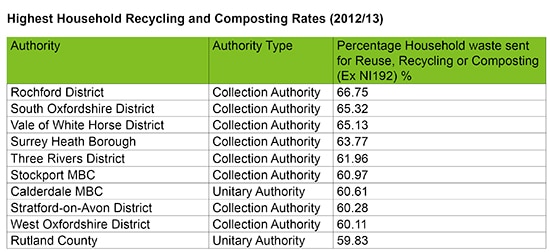
Rochford
Rochford, the top performing council, operates a three bin system one for residual waste, one for garden and kitchen waste and one for dry recyclables. Organic waste is collected weekly by contractor SITA UK, while the other two are collected on alternate weeks. While the council has climbed from third position in 2011/12 its recycling rate has decreased from 67.4%. This is a common theme among the top 10 performing councils.
Commenting on Rochford’s achievement, Dave Swire, regional manager at SITA UK, said: “We are delighted that Rochford has achieved the highest recycling rate in the UK this year and it is a fantastic reward for all the enthusiasm and dedication that has been shown by Rochford’s residents.
“Rochford District Council has done a great deal of work with local residents to help them understand how to recycle more efficiently and this has helped SITA UK to maximise the amount of material that can successfully be recovered. In particular, younger residents have taken a leading role in encouraging more people to recycle properly.”
Mr Swire added: “This local enthusiasm has been matched by our staff who also take great pride in providing a high level of service in return. However, we want to stay at the top and we will continue to work with the local authority and residents to improve further.”
Biffa
Last years champion Vale of White Horse (see letsrecycle.com story) is now in third position after its recycling rate fell from 68.7% in 2011/12 to 65.13%. South Oxfordshire district council remains in second place with a recycling rate of 65.32%.
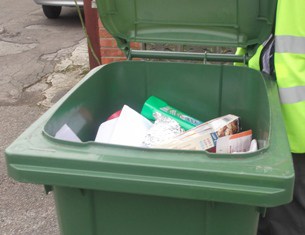
Biffa operates a shared service between the two councils which sees dry recyclables including paper and card, glass, cans, aerosols, foil, plastic bottles and packaging and food and drink cartons collected in green wheeled bins on alternate weeks to residual waste in grey wheeled bins, alongside weekly food waste collections and a fortnightly charged for garden waste service. The councils also have a strict policy of not collecting side waste.
Commenting on the reasons for the slight decline in recycling rates, Pete Dickson Biffa municipal development director, said there were a number of possible reasons for the fall off including: economic pressures influencing consumers to buy less packaged goods; a downsizing in actual packaging; a migration from glass to plastic containers; a reduction in paper consumption, thanks to technology; and more online buying, which means more cardboard.
Mr Dickson believes these trends will continue and added it is entirely possible that recycling percentages will fall simply because there will be less dry recyclable materials in household waste to be diverted.
He added: In the case of South Oxfordshire and Vale of White Horse, we know their recycling rates have also fallen because the Environment Agency has ruled that road sweepings cannot be classified as recycling.
Service
Biffa dominated the top ten recycling councils also servicing Surrey Heath borough council and Stratford-on-Avon district council. Mr Dickson added: When a council has the will to change the way things are done, and sometimes dramatically. Biffas preferred service model comes into play. Where feasible and practical for the area in question, this model focuses on collecting refuse and dry recyclables, the latter fully commingled, from wheeled bins on alternate weeks, and collecting waste food each week. The fact that Biffa-serviced councils account for 40% of the top ten says it all.
Related Links
The contractor also works with Ashford borough council in Kent, which remained at the bottom of the league table for 2012/13 with a recycling rate of 12%. However, Biffa began the contract with the Mid Kent Joint Waste Partnership, which Ashford is part of, in July 2013 and remains confident that the councils performance will improve as a result (see letsrecycle.com story).
Notably the most improved council is Aylesbury Vale which saw its recycling rate improve by 75% from 21.54% in 2011/12 to 37.78% in 2012/13. The Buckinghamshire council operates a three bin service which sees food waste collected weekly and commingled dry recyclables collected in a blue-lidded wheeled bin on alternate weeks to residual waste which is also collected in a wheeled bin. The council also offers a garden waste collection service which residents must pay for. For more information on the most improved councils, see the table below.
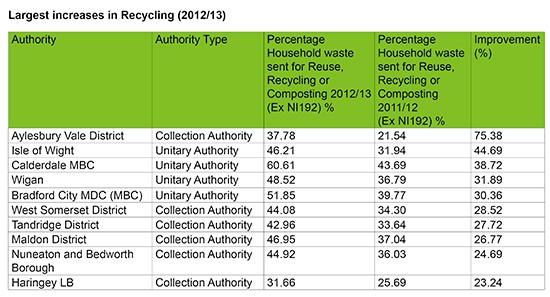







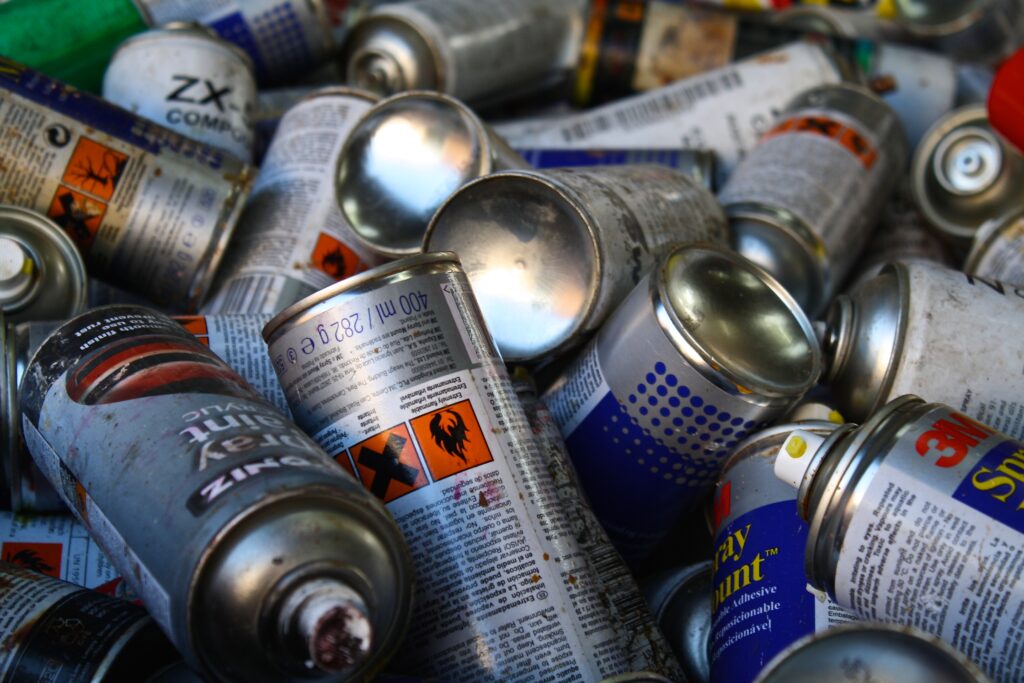



Subscribe for free